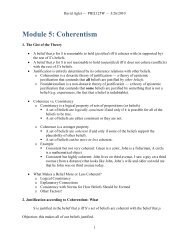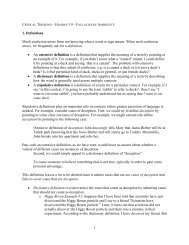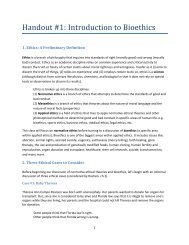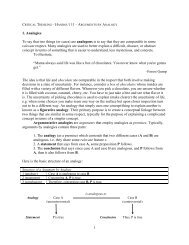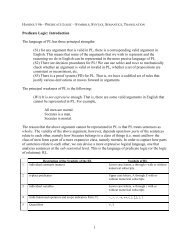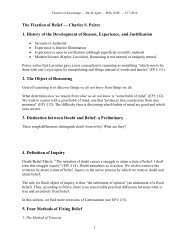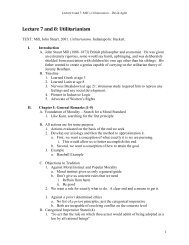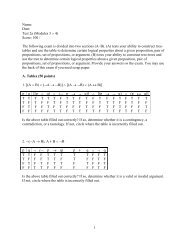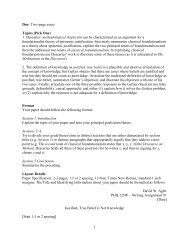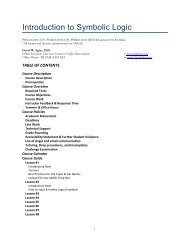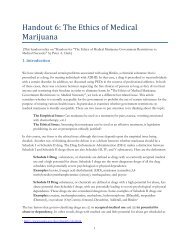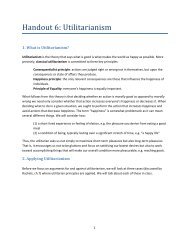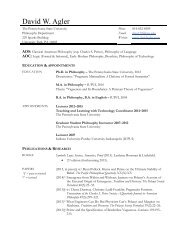Chapter 9 Modal Language, Syntax, and Semantics - David W. Agler
Chapter 9 Modal Language, Syntax, and Semantics - David W. Agler
Chapter 9 Modal Language, Syntax, and Semantics - David W. Agler
- No tags were found...
Create successful ePaper yourself
Turn your PDF publications into a flip-book with our unique Google optimized e-Paper software.
for every world in W, if w′ accesses w′′ <strong>and</strong> w′′ accesses w′′′, then w′ accesses w′′′. In contrast, in aD model, the accessibility relation R is serial such that for every world w′∈ W, there is somew′′∈W such that Rw′w′′.The different formal properties which characterize the accessibility relation have aneffect on which well-formed formula will count as tautologies, contradictions, contingencies,which arguments will count as valid, <strong>and</strong> which formula count as being a semantic consequencefrom a set of formula. That is, in some modal systems, a given argument will count as valid,while in others, it will not.ValidSemanticConsequenceAn argument ⊨ P is valid in a ML-model (M =) iff for every w∈W,v M (P, w)=TA wff R is a semantic consequence of a set of propositions {P} in an MLmodel(M =) iff for every w∈W, if v M (S, w)=T for each S∈{P}, thenv M (R, w)=T.• Illustration of How Some arguments are invalid & Counter-models• Illustrations of How Some Arguments are valid in S5 but not in K• Translations• Metaphysical Issues.Exercise Set #412



